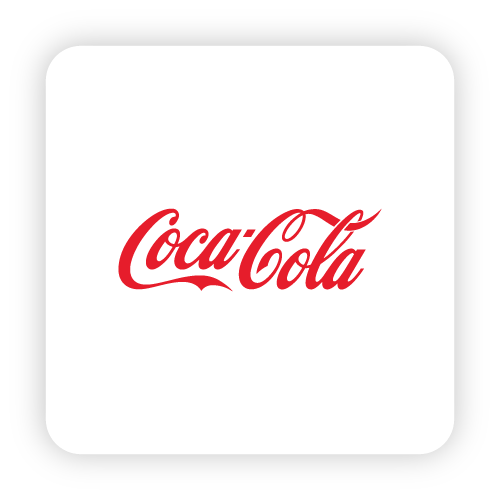Here is the thing: if your company is able to manage its product mix well, then it would be easier for you to adapt to the changes in the market, diversify the risks, and generate substantial profits.
A part of the marketing mix, the product mix is at the heart of every business. Undoubtedly, a solid product mix is a key to growing your company and achieving new heights.
Truth be told, a poor product mix could have a detrimental impact on your company’s brand image and of course, profitability. That’s a nightmare and you certainly don’t want that!
So, if you want your company to survive and thrive, then you must build a really good product mix. In this blog post, we will discuss what a product mix is, why it’s important, and a few examples. Let’s roll!
Well, What is Product Mix? (Definition & Meaning)
Also known as ‘product assortment‘ and ‘product portfolio‘, the product mix refers to the total number of goods and services a seller in the market offers to consumers.

A product mix consists of several products lines offered by a company, and a company may contain one or multiple product lines in its product mix. Also, each product line might have several products under it.
For instance, a company might offer multiple fairly similar product lines – such as mouthwash, toothbrush, and toothpaste. Whereas, a company might even have varied product lines that don’t have any relation to each other – such as soft drinks and clothing apparel.
In simple words, the product mix is the amalgamation of all the product lines a firm has under it. The deeper and wider a product mix is, the more products a company can offer, which will ultimately lead to more reach.
But, What Exactly Is The Difference Between a Product Line & Product Mix?
See, a product mix is a group of everything that’s offered by a company. Whereas, a product line is a subset of the product mix. It refers to one line of similar products that are sold by a company.
Basically, products within a product line would have nearly similar functions, benefits, target audience, and distribution channels. A product mix is the combined total of all these product lines.
Product mixes are different from company to company. Some companies have multiple product lines, with multiple products in each line and others have much smaller ones. It entirely depends on the variety of products that they offer and their financial position.
Read more: Product Requirements Document (PRD): Definition, How to Steps & Template!
Okay! Now, Why Is a Product Mix So Important?
The product mix has a profound impact on your company’s brand image. With a larger product mix, you will be able to meet the demands of different consumers and target markets.
In addition, the more product width and depth your company has, the more diversified it would be. The result? There would be less risk as your company wouldn’t be entirely dependent on one product or product line.
Another reason why having a product mix is important is because it helps you understand the direction in which your company is heading. The data that you accumulate through a product mix helps you determine what’s working, what’s not working, and where you want to take the company in the future.
Not just that, expanding the product mix also helps you cater to your existing customers in a much more efficient and fulfilling way. Remember that the needs of your customers keep changing as time moves forward, so keep updating your product mix accordingly.
Most importantly, as the business grows, you might be tempted to update your product mix to reach more people. While doing so, make sure that you don’t compromise on your existing products’ quality. Be extremely careful while changing and adding product lines.
So, What Are The Dimensions of The Product Mix?
1. Width
The width (or breadth) of a product line refers to the total number of product lines provided by a company. The wider the width, the more types of products are offered by the company.
For example, if a company sells juices and soft drinks, that means it has two product lines. Now, if it sells mineral water as well, it would mean that its product mix width is three.
2. Length
The length of the product mix is the total number of products that the company is providing to the customers. For instance, if a company has four product lines, and has five products within each product line, then the length of the mix would be 20 (5*4).
3. Depth
The depth of a product mix refers to the total number of variations of every product in a particular product line. The variation could be in the form of size, color, or any other product characteristic.

For instance, Colgate, in its toothpaste product line, has different variants such as Colgate Active Salt, Colgate Advanced, and more. Also, if it sells the same toothpaste in various sizes, it’ll also count as depth.
4. Consistency
Consistency refers to how similar the products in a product line are to each other. It could be in terms of use, distribution, production, or any other way.
More consistency is beneficial as it leads to better distribution, and of course, lower costs. Moreover, it also keeps your brand image aligned with the products offered by your company. Nestle is a classic example, as it has great consistency in its product line.
Got it! Can You Give Some Solid Examples of Product Mix?
 1. Coca-Cola
1. Coca-Cola
To make everything simpler, let’s assume that Coca-Cola only has two product lines – juice and soft drinks. Under juices, Coca-Cola offers four flavors – Mango, Orange, Mixed Fruit, and Guava. Under soft drinks, the company offers Diet Coke, Fanta, Coke Zero, and Sprite.
| Juices | Softdrinks |
| Mango | Diet Coke |
| Orange | Fanta |
| Mixed Fruit | Coke Zero |
| Guava | Sprite |
Now, let’s figure out the four dimensions in this case:
- The product mix width of the company is two – as there are two product lines.
- The length would be eight, as there are four products in each of the product lines.
- The product mix depth will be four products for each product line, as there are four variations.
- The consistency is extremely high, as all the products are somewhat similar.
Read more: Price Skimming: Definition, 3 Types of Phases, Pros & Cons!
 2. Apple
2. Apple
Apple has several product lines, but for this example, let’s assume that Apple has four different product lines – iPhone, iWatch, iPad, and MacBook.
Under the iPhone category, Apple offers three models: iPhone 6S, iPhone X and iPhone XI. Under the Macbook category, Apple offers three models…and so forth for iPad and iWatch.
| iPhone | Macbook | iPad | iWatch |
| 6S | MacBook Pro | iPad Pro | Series 3 |
| X | MacBook Pro – M1 Chip | iPad Mini | Series 4 |
| XI | MacBook Air | iPad Air | Series 5 |
Now, let’s figure out the four dimensions in this case:
- The product mix width of the company is four – as there are four product lines.
- The length would be twelve, as that’s the total number of products that the company is offering.
- The product mix depth will be three products for each product line, as there are three variations.
- The consistency is extremely high, as all the products are somewhat similar.
Awesome! So, Are There Any Factors That Might Affect The Product Mix?
The product mix can be modified or expanded based on eight factors:
1. Financial Position
A company with good financial standing will likely have more products in their product mix, compared to a company that doesn’t have the budget to build and introduce new products.

Moreover, a company that is not doing well financially might even slash down its existing products or product lines.
2. Area of Operation
If a company is operating in an industry where making more products is feasible and easier, then it would definitely have a larger product mix. For instance, there is a lot more scope for innovation in the smartphone industry that in the chip industry.
3. Production Costs
Every company has a set budget, and a company will always produce those products that fall within its budget.

So, a product mix is widened or narrowed as per the production costs of the items. If the manufacturing cost of a certain product rises, the company might decide to drop the product and reduce its production costs.
4. Brand Identity
Sometimes, a brand becomes so well-known and loved, that it is easier for it to add new product lines or items – whether they are related or unrelated. For example, the rumors of Apple coming up with a car have been floating around for quite a long time.
5. Objectives and Policy of Company
A company always formulates its product mix according to the objectives it has established.

Therefore, the modification or addition of product lines and products are completely dependent on what the company is planning to achieve as well as the policies of the company.
6. Demands of The Consumer
Every company naturally prioritizes products that are in the most demand. In situations where the demand for a product is falling, a company has to drop the product. The change in the preferences of the consumers is directly related to the product mix of a company.
7. Fluctuation in Demand Due To Other Facts
Apart from the preferences of the consumers, demand might also get affected due to an increase in population, war, flood, drought and non-availability of substitutes.

Seasonal effects, or any other reason. In such scenarios, a company is bound to adjust its product mix.
8. Government Rules and Restriction
The legal framework has a huge impact on the size and composition of a product mix. Generally, companies only produce products that are not banned/restricted by the governments. At times, when a particular product is declared illegal, a company has to stop its production, which narrows down the product mix.
Wrapping Up
A product mix gives you the ability to meet different consumer demands and diversify risk. It even allows you to meet the needs of your existing customers in a much better way.
However, if you start adding unnecessary products in your product line to widen your product mix, it could hurt your company’s bottom line and brand image.
So, always be careful while expanding your product mix. Carry out thorough checks and make sure that there’s a demand for the products that you’re planning to introduce.
Most importantly, when you start your company, it’s better to keep your product mix narrow. Once you establish a name in the market and start growing, you can enter new markets and come up with new products.
We know that there’s a lot of information to digest here. So, if you have got any queries, suggestions, or concerns, let us know by tweeting us @bit_docs. Cheers!
Frequently Asked Questions (FAQs)
Que: What are the 4 components of the product mix?
The product mix refers to the entire set of products a company offers to its customers. It’s essentially a company’s product portfolio. Here are the 4 key elements that define a product mix:
- Width (Breadth): This refers to the number of different product lines a company offers. A company with a broad product mix caters to a wider range of customer needs.
- Length: This refers to the total number of products within a single product line. For example, a shoe company’s line of athletic shoes might have a length of 10 if they offer 10 different variations.
- Depth: This refers to the number of variations offered for each individual product. Think of different sizes, colors, flavors, or features within a product line.
- Consistency: This refers to how closely related the various products are within the mix. Do they share similar brand elements, target the same audience, or fulfill similar needs?
Que: What are the 4Ps of product marketing mix?
While not strictly part of the product mix itself, it’s important to note the 4Ps of marketing, which are crucial for bringing your product mix to market effectively. These are:
- Product: This encompasses everything related to the physical product itself, including its features, benefits, and design.
- Price: This refers to the value assigned to the product and how it impacts consumer decisions.
- Place: This refers to the distribution channels used to get the product to the customer.
- Promotion: This encompasses all the activities used to communicate the product’s value to potential buyers.
Que: What is the first step of product mix?
The first step of product mix involves understanding your target market and their needs. By conducting market research and competitor analysis, you can identify opportunities to develop or refine your product offerings.
Que: What are the benefits of a strong product mix?
A strong product mix can help you:
- Attract a wider range of customers
- Reduce risk by diversifying your offerings
- Increase sales and revenue
- Improve customer satisfaction
Que: What are the risks of a weak product mix?
A weak product mix might lead to:
- Limited market reach
- Increased competition
- Lower sales and profits
- Customer dissatisfaction
Que: How can I improve my product mix?
There are several ways to improve your product mix, including:
- Developing new products to fill gaps in the market
- Expanding existing product lines with new variations
- Phasing out underperforming products
Que: How does the product mix relate to the product life cycle?
The product life cycle refers to the stages a product goes through from introduction to decline. A company’s product mix should adapt to these stages. For example, during the introduction stage, you might offer a limited number of variations to test market demand. As the product matures, you might expand the depth of the product line.
Further reads:
Product Launch Plan: What is it & How to Create it?
Product-Market Fit: What is it & How to Achieve it?
Software Product Development: Definition, Types, Methodologies & Process!
What is Product Adoption & How to do it Right?
Product Development Process: What is it & its Key Stages!
What is Product Branding? 8 Product Branding Examples!

Related posts
Bit.ai | Watch to Learn More
What is Bit.ai?
Bit.ai is an innovative AI-driven knowledge and Document Managment suite designed to empower knowledge workers by streamlining the creation of, documents, wikis, and notes. With an intuitive interface and seamless integration, Bit.ai acts as a versatile assistant to help you collaborate, generate, organize, and visualize your ideas effortlessly. Whether you are drafting a report, managing a project, collaborating with your team or clients, or brainstorming new concepts, Bit.ai brings intelligence and creativity to every aspect of your work process.




